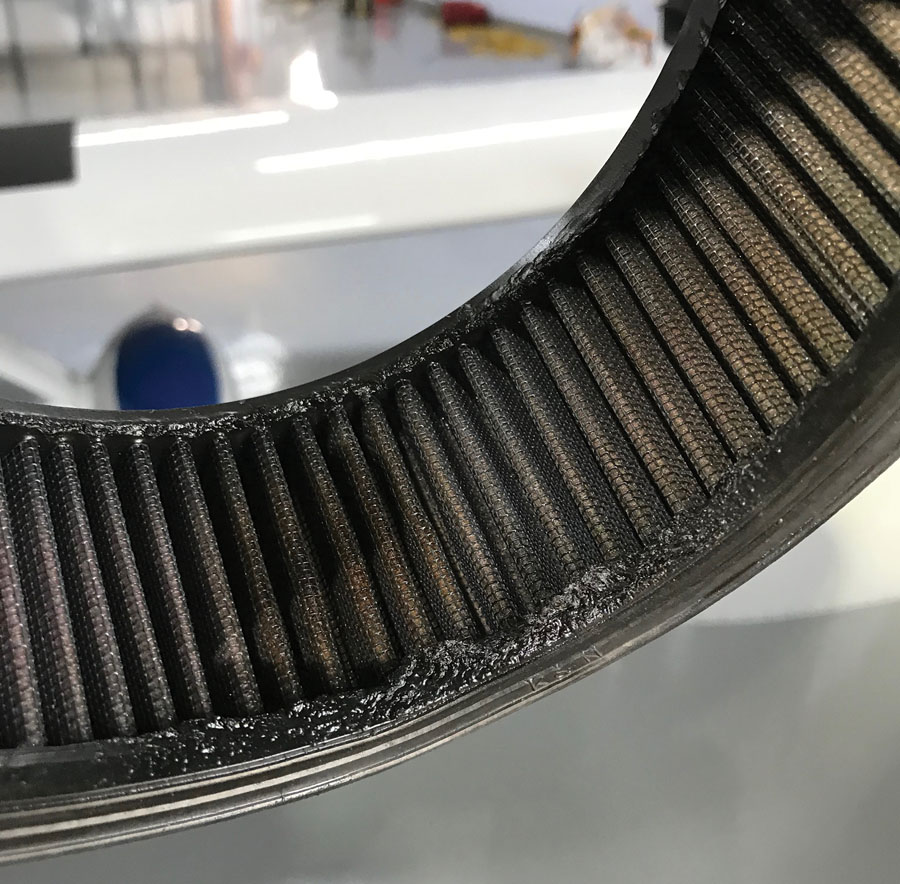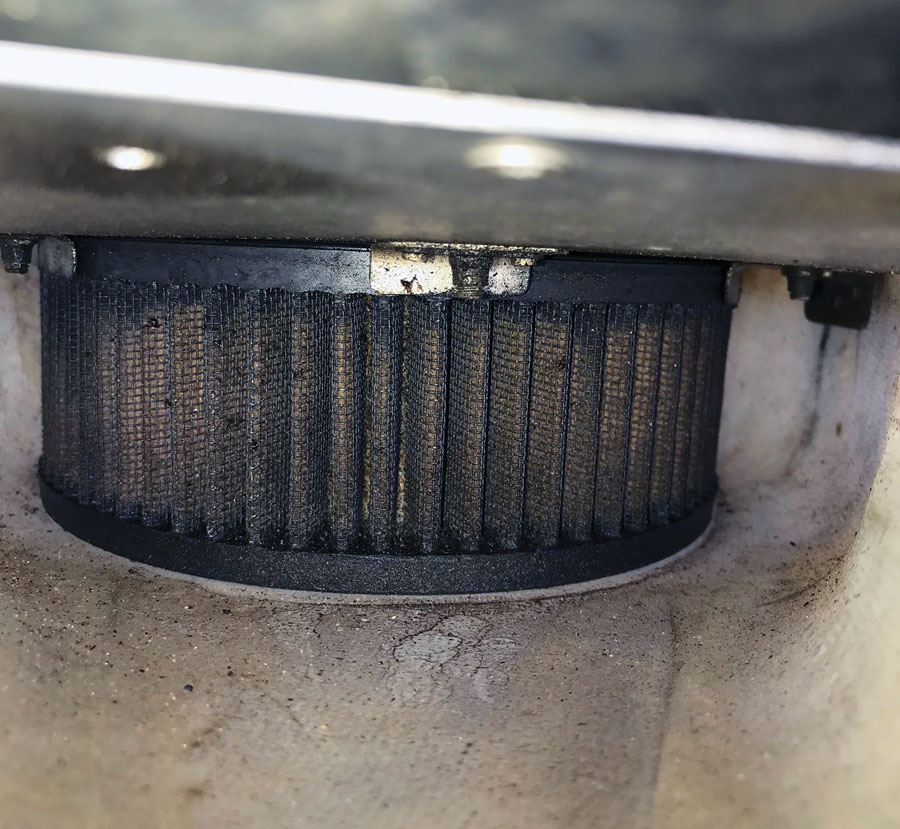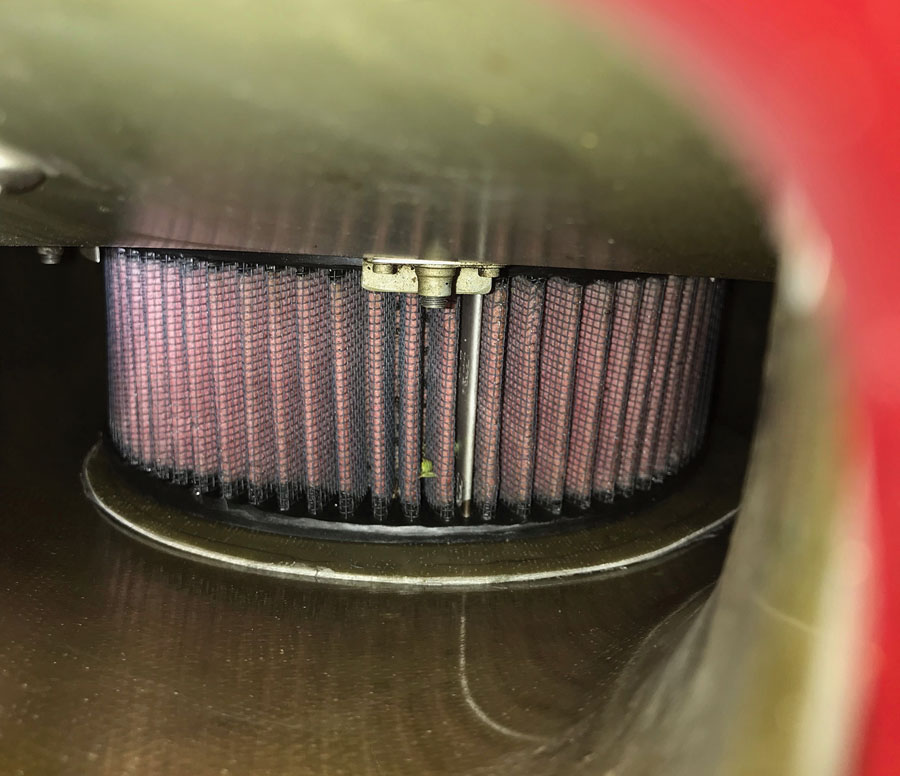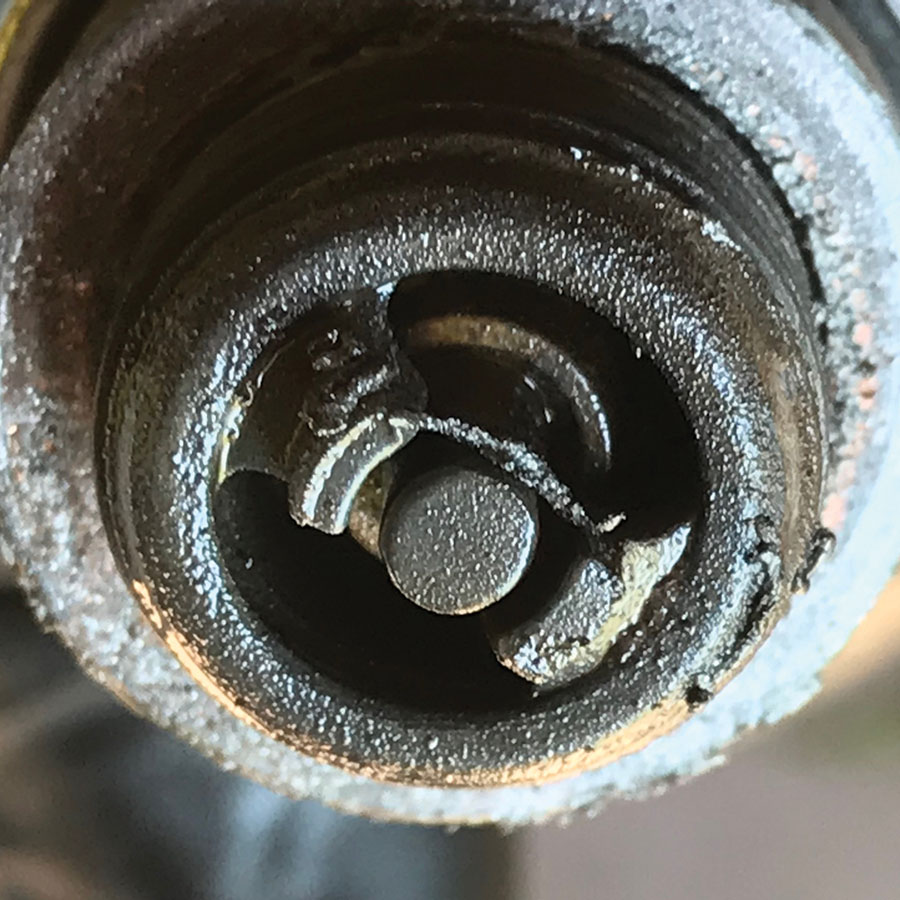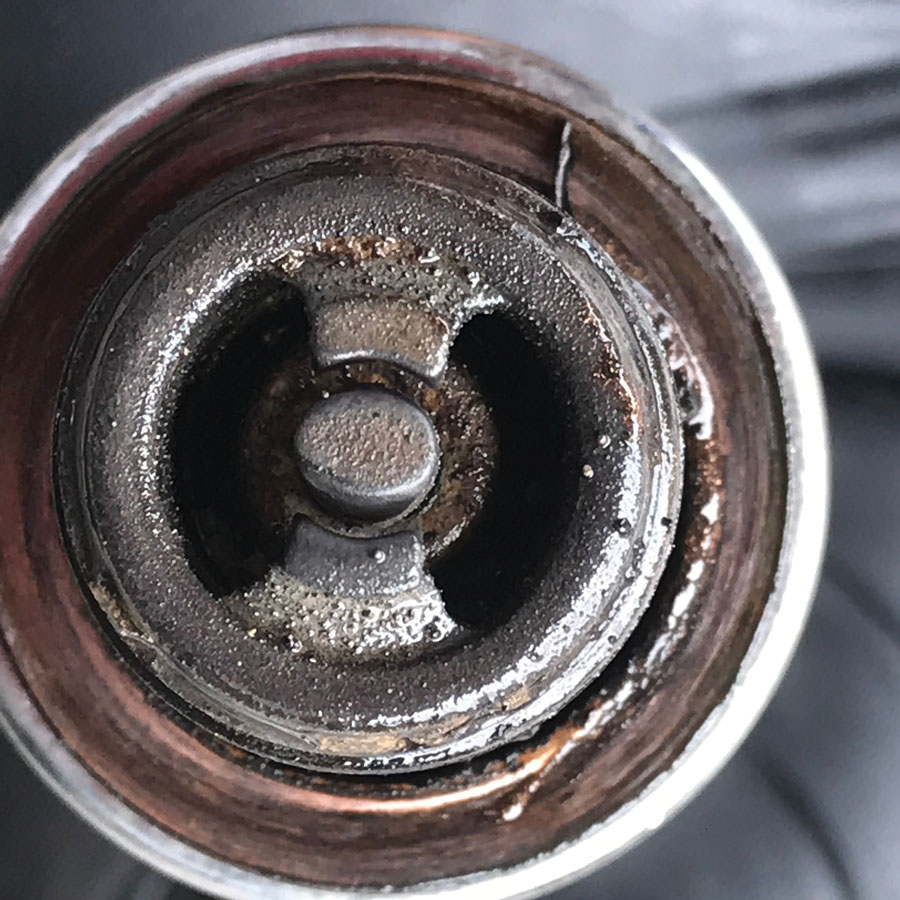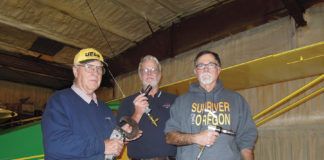In many of my columns, I extol the virtues of following good examples and best practices of others. The most rewarding part of the work I perform when inspecting airplanes is seeing some unique ideas implemented by other builders. You hear about the problems I find, both here and on some of the forums, and it could get you thinking that there’s a bunch of junk out there, when actually the converse is true. Even in the months that we walk away from 30%-40% of the aircraft due to findings on the prebuy inspection, that means 60%-70% of the aircraft pass an inspection and the sale is completed. On top of that, those I find in the top 10% seem to have three common areas: attention to detail during the building process, a willingness to seek advice from other builders and/or technical counselors, and a solid approach to maintenance.
Here’s an air filter that was removed during a condition inspection. It has clear evidence of a backfire or induction fire. I bet that didn’t happen the day before the condition inspection. Why not take a look during the course of the year at the air filter?
I also espouse that when it comes to improving the flight safety record of amateur-built aircraft, there are some really good practices we can borrow from airline and corporate flight departments. Things such as continuous training, thorough flight reviews, and proper weather assessment can have a really positive impact upon flight safety. So, it got me thinking about other areas that perhaps we could emulate, and the maintenance process certainly sticks out as a prime candidate.
We are all aware that the general aviation airplanes we fly have a requirement for an annual inspection, called a condition inspection in the amateur-built aircraft world. For many owner operators, just the thought of the upcoming inspection can bring stark terror. One never knows if it is going to be a routine inspection, or the mechanic is going to find some problem that may cost a whole lot of money to rectify. For those of us who built our own airplanes, it’s usually not as stressful, but there can still be surprises. Either way, the inspection has to be signed off by an A&P or the holder of the repairman certificate, or an IA in the case of a certified airplane.
K&N filters are popular on many varieties of homebuilts. Properly cared for with regular cleaning and oiling, they do an excellent job of filtering. Most can be checked on a preflight, and if it looks like the one above, then take the time to clean it. After all, it is most likely protecting a very expensive engine!
It is here that the airlines and commercial operators have a different practice, one we might want to emulate. In fact, some of us most likely already do it. Looking at the big picture, an airline operator really can’t afford for the airplanes to be down for maintenance for any length of time. The airplanes only provide revenue when they are in the air. One could say that our E/A-B airplanes only produce fun for us when they are in the air, too!
I’m going to simplify it a little here for the sake of the column, but the difference is that the airlines practice what is called progressive maintenance, meaning inspections are constantly being done throughout the year. If there are squawks with the aircraft, the flight crew writes them up after each flight and then they are either fixed or deferred by the maintenance team. There really is no one big “event” where everything is fixed all at once. We as the flying public really benefit from this practice.
So it seems to me that this could be another practice we could copy. I have been doing this for years on my own airplanes, mainly because I don’t like to find out about a problem when I want to go fly. I believe in post-flight inspections and then correcting anything, however small, prior to the next flight. I think it has been a primary reason for almost 100% dispatch of all 11 of the airplanes I have built since 1981, the only exception being a failed alternator on my RV-4 back when we unknowingly used automotive alternators without the correct pulley size.
If you think about all of the things that occur during the course of the year, you can find some reason to spend a little more time with the airplane and call it progressive maintenance. Most of us are at least visiting the airplane every 28 days just to update all of the databases!
Here’s another example that comes to mind: ELT batteries rarely expire at the same time the annual inspection is due, and many of the ELTs are in the aft fuselage, behind a baggage bulkhead. So, while we are back there changing the batteries, why not go ahead and inspect the following items: tail cone for corrosion, controls for lubrication, jam nuts, battery connections, and static fittings for tightness, and vacuum out all of the dirt? If completed with the proper attention to detail, it may only add another hour to the task of changing the ELT batteries, but it will be one less thing at the inspection event.
Take a look at these plugs. Not only is the gap out of range, one even has a short across the 2 electrodes, and the other is pretty worn out! There’s a pretty good chance this didn’t happen the day prior to the condition inspection. Take the time to clean and gap plugs during the year. Your engine will thank you with better starts and fuel economy.
Let’s look at some other examples. Some people change electronic ignition spark plugs at every condition inspection because they are so cheap. Well, what if you’ve only flown 50-75 hours in the last year? Why not just wait for another 25 hours, which might be in three months, and then change them? It would be another reason to take a close look at the engine compartment. Remember that alternator belt that might be approaching the 500-hour mark? Taking a few hours to change it now would really just be another little project.
What about taking the same approach with the brake pads and tires? Have you ever really seen both of them wear out at exactly the same time as the annual inspection? I know I haven’t, but I have seen some brakes and tires way overdue by inspection time. Why risk the airplane? Changing the brake pads doesn’t take more than a couple of hours, with most of the work actually coming from removing and reinstalling wheel pants and fairings. The same thing with tires—both mains can probably be done in a couple of hours, including repacking the wheel bearings, a miserable job in its own right.
Doing each of these tasks in isolation during the course of the year has some added benefits. For those of you who do your own maintenance, the annual inspection can be done in less time, it will not be so overwhelming, and the time can be spent on inspecting vs. maintenance. (More on that part in a minute.) The other tangible advantage is that you can spread the costs out across the year, as opposed to one big bill at the inspection.
I’m pretty sure all of the tread didn’t just wear out on the way to the condition inspection. Why risk an expensive airplane, including a chance for personal injury? Yes, all of the close-fitting wheel pants that seem to be popular do make it harder to check the tires, but it is the pilot’s responsibility to perform a proper preflight.
So what’s the difference between inspection and maintenance to which I alluded? The way I perform an inspection is just that—I try to put my eyes and hands on every system to make sure it is correct. Things such as checking date codes on hoses, checking the security of wiring, checking for SB compliance, and performing compression checks come to mind. The reality is, if all of the heavy maintenance items are left for the annual occurrence, we tend to focus on those and can sometimes miss the potential next failure item. It’s easy to miss something at the end of a long day in the hangar, especially when working in extreme temps, along with being under pressure to get home. We get the compression check completed, perhaps get preoccupied with a sticky valve, and then forget to use new washers when reinstalling the spark plugs.
Here’s an approach you might consider for your next inspection: perform a thorough inspection of the airplane and the systems first. Then sit down and review the list of discrepancies and put together a schedule over the course of the next year to get everything done, except for any unairworthy items, of course! It might take a couple of years to actually get your own airplane worked into a progressive maintenance schedule, but be patient and give it a try.
I’m willing to bet that you will find that using a progressive maintenance program can be fun instead of it being an annual headache, and you may even take the time to learn some new ways of doing things. I know I do, as it’s more fun to try something new when not under a time crunch or when tired. You will still need to make the annual condition inspection note in the logbook.
By the way, doing all of the routine stuff throughout the year really gives me a lot of confidence in the status of the airplane. The occasional night flight or instrument flight is a whole lot less stressful, which for me equates to more fun!

